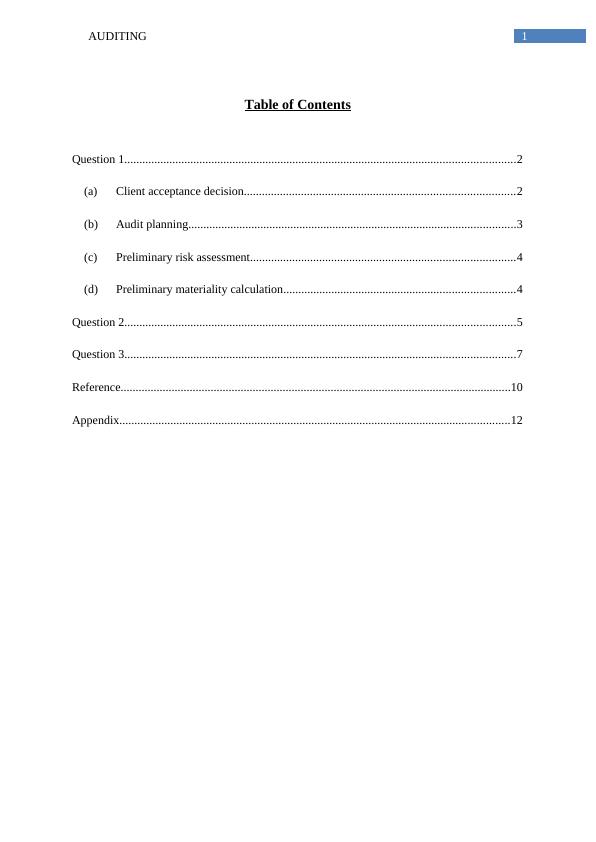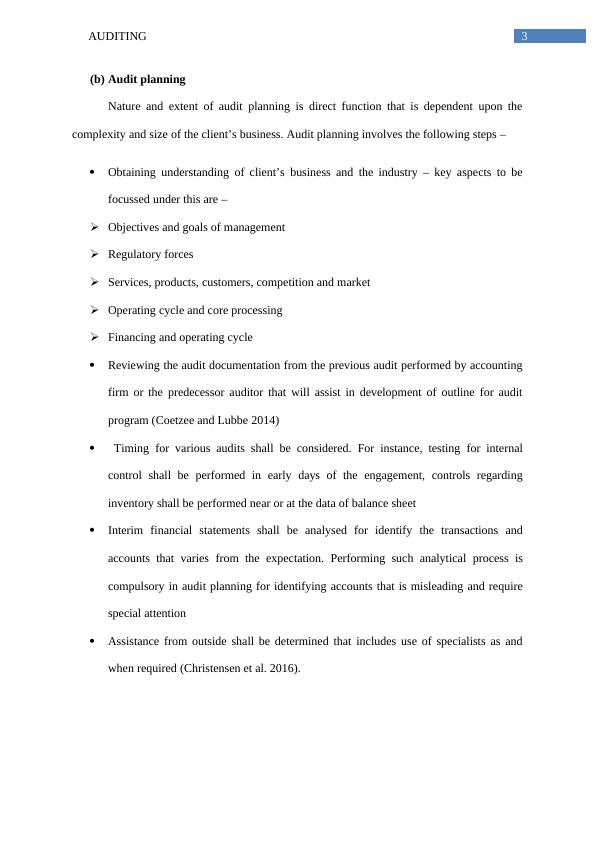Auditing: Client Acceptance, Audit Planning, Preliminary Risk Assessment
14 Pages3391 Words91 Views
Added on 2023-03-21
About This Document
This document provides an overview of client acceptance decision, audit planning, and preliminary risk assessment in the field of auditing.
Auditing: Client Acceptance, Audit Planning, Preliminary Risk Assessment
Added on 2023-03-21
ShareRelated Documents
End of preview
Want to access all the pages? Upload your documents or become a member.
Audit In Business || Assignment
|14
|3800
|71
Auditing & Professional Practice
|10
|1819
|176
Auditing and Professional Practice
|10
|1969
|253
Issues in Auditing Practices
|17
|2550
|141
Auditing and Assurance
|22
|4990
|418
The Audit Expectation Gap - Essay
|12
|3580
|159




